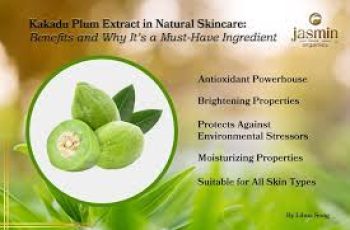Retinol Skin Care Benefits – Why is Retinol Good for Skin?
You may have heard of Retinol and maybe even use it in your skin care routine, or you may not know why you should use Retinol at all. That’s why I decided to put together a simple explanation of the benefits of this amazing ingredient and why you should use it!
Why Should I Use Retinol?
Retinol is extremely beneficial for the skin, and not just for parents of three! If you have skin issues like enlarged pores, fine lines, wrinkles, uneven skin tone and texture. Believe it or not, Retinol can solve all of these problems!
You will notice a big difference in your skin after about 4 weeks of use, and noticeable changes will become apparent after 3 months of continued regular use. Your skin will feel firmer, plumper, and look younger. Fine lines and wrinkles are smoothed out, and skin looks smoother overall. Lastly, skin pigmentation caused by sun damage or acne scars is visibly reduced. Yes, it really is that good!
What is Retinol?
Retinol is a form of vitamin A and incorporating it into your skincare routine can boost skin renewal. Supporting skin renewal will ensure your skin has a healthy glow all year round, as dead skin cells tend to linger on the surface of the skin, giving it a dull, lacklustre appearance. Retinol can also penetrate the lower layers of the skin and support collagen production, which is essential for keeping your skin youthful and healthy. When we reach our 30s, the rate at which collagen is produced slows down. Although this may sound discouraging, retinol is the first step in managing this condition, and the sooner you add it to your daily routine, the more preventative benefits you will reap! Other issues such as sun damage are also significantly reduced. What you should remember about sunburn is that you can’t make it go away completely, but over time, the pigmentation will become lighter and less noticeable to the naked eye.
When should I use retinol?
There are a lot of conflicting opinions and information on the internet regarding the topic of retinol! The most common claim is that using retinol during the day can actually speed up premature skin aging and even cause skin irritation and possible burns. This is not true, the only problem that can occur with using retinol during the day is that the sun can reduce the effectiveness of the retinol, making it unapplicable! To really reap the benefits, it is best to use it at night before bed.
How to Use Retinol?
Retinol is a complex product, mainly because it has different effects and can cause reactions on the skin if used in excess. This is the best way to introduce retinol into your daily routine without causing irritation, burning or discomfort.
Start by choosing a lower percentage of retinol, such as 0.3%.
Use it twice a week in the evenings for the first two weeks.
You can then use it every other night for the next two weeks.
Over the next few weeks, your skin will be fully acclimated to using the product every night.
Your skin is now accustomed to the retinol, and the percentage can be increased to 0.5%, 0.6%, 1%, and 2%.
This routine is best if you want to introduce retinol without causing a reaction. It is one of the most confusing and complex ingredients on the market, but once you understand a good starting point for using it, you won’t look back!
Can I use retinol if I have spots?
Retinol is a very effective ingredient. It opens up pores, promotes skin renewal, and supports cell turnover. All of this helps restore blemish-prone skin to a healthy state and makes it easier to care for while fighting breakouts. If you follow the steps above, you will notice a noticeable reduction in your pimples or blemishes.
If you still have hyperpigmentation from acne scars, retinol will also help, and after 3 months of use, you will notice that the pigment is no longer visible to the naked eye.
All skin types will see a noticeable difference after using retinol, from signs of aging to sun damage to uneven skin texture and more. If you are still concerned that retinol is not right for your skin, talk to your GP or dermatologist and seek professional advice.
You cannot add retinol to your routine if you are pregnant, breastfeeding, or taking medication that cannot be taken with vitamin A.
Can I use AHAs and BHAs with retinol?
There is a lot of conflicting information about using liquid exfoliants such as AHAs or BHAs at the same time as retinol. Many claim that using both products can lead to overuse and unpleasant reactions in the skin. I can put your mind at ease by telling you that this is not the case. Both products work on different layers of the skin. Retinol works with the cellular movement in the lower layers of the skin, while liquid exfoliants like AHAs and BAHs work to remove dead skin cells on the surface. Because they don’t fight each other or overexpose the skin with skin-drying formulas, they actually become a powerful duo that work together to keep your skin healthy and glowing.
That’s it for retinol. Hopefully, you now have a little more knowledge and understanding of this powerful (albeit complex) ingredient.
DQH Can I use salicylic acid first and then vitamin C?
It’s easy to create a skincare routine, but knowing how to use it is another thing entirely. In most cases, if you’re not getting the desired skin results, it could be due to the layering of conflicting ingredients. So, is it possible that salicylic acid and vitamin C are such ingredients? Or are these active ingredients the duo that’s been missing from your skincare routine? If you want answers, stick around because today we are going to explain the benefits of salicylic acid and vitamin C and how they can be used in your daily life.
What are the benefits of salicylic acid for skin?
Salicylic acid is one of the most commonly used beta hydroxy acids and is favored by many people with oily, acne-prone skin. This acid is derived from willow bark, and unlike its water-soluble relatives (called alpha-hydroxy acids), salicylic acid is oil-soluble, which means it can penetrate deeper into the lower layers of the skin. Once it reaches the lower layers, it can help unclog pores of excess sebum, dirt, bacteria, debris, and impurities. This results in clearer skin tones and greater definition.
Not only does salicylic acid benefit the underlying layers, but the outer surface of the skin benefits as well. When applied to the skin, salicylic acid removes the buildup of dead skin cells. This is accomplished by breaking the bonds that hold dead cells to the surface. Over time, this can cause the complexion to look dull and prone to acne, blackheads, and other blemishes.
If you’d like to learn more about salicylic acid and how it can improve your skin, check out this dedicated blog post from a beauty insider.
What are the benefits of vitamin C for skin?
Vitamin C is considered one of the most powerful antioxidants, which means it is very effective at fighting free radicals and preventing them from causing further skin damage. Examples of free radicals include pollution, central heating, UV rays and harsh climate. They attack proteins, fats and cell membranes as soon as they come into contact with the skin, causing signs of premature aging such as fine lines and wrinkles as well as hyperpigmentation, flaky patches of skin and loss of elasticity.
Many people usually prefer to use vitamin C in their morning routine as this ingredient gives the complexion a radiant glow. You’ll also find that vitamin C can target areas of hyperpigmentation, plumping the skin and reducing the appearance of fine lines and wrinkles.
The thing about vitamin C is that there are a lot of outdated studies going back to the 1950s that describe vitamin C as an unstable skin component. Thanks to improvements in modern technology, this is no longer the case as all products now contain a stable form of vitamin C.
Visit The Beauty Insider to learn more about vitamin C. So please check out our blog post.
Can I use salicylic acid first and then vitamin C?
Yes, you absolutely can. In fact, it’s thought that using salicylic acid before using vitamin C ensures it penetrates faster and works faster.
This is an efficient way to utilize two power sources, and the reason has to do with pH. For example, the skin’s natural pH is about 4.7, making it slightly acidic. Salicylic acid and vitamin C are also both acidic, and you’ll find that vitamin C is absorbed quickly into the skin. Therefore, using salicylic acid beforehand can increase the acidity of the skin and allow vitamin C to penetrate into the skin faster.
While this is considered an effective way to combine two powerful ingredients, you need to be aware of your skin type and how it reacts to certain active ingredients. Even people with perfect, normal skin can experience skin sensitivity and irritation. Therefore, always consult a doctor or dermatologist before using any new products on your skin.
It’s also important to follow skin application rules. In this case, you need to use the product correctly to ensure you get the best results for your skin. If you’re not sure what I mean, the basic rule for skin is to start with the thinnest consistency and work your way up to the thickest consistency. This prevents a barrier from forming on the surface, preventing other active ingredients from penetrating the skin.
Can I use salicylic acid at night and vitamin C in the morning?
Yes, absolutely, this is considered the most effective way to get returns without any adverse side effects. This is because there is enough time between applications to ensure that the skin’s pH levels return to balance.
You’ll also find that Vitamin C is rich in antioxidants and is perfect for use in the morning to ensure your skin is protected and looking its healthiest. Due to the small size of salicylic acid molecules, it is an acid that is able to reach the deepest parts of the skin. While this is effective at keeping skin clear, it also increases the risk of irritation and photosensitivity. Therefore, many people prefer to use powerful BHAs in their evening routine without exposure to UV rays, pollution, or harsh weather.
Warning: If you avoid using sunscreen every day, none of these ingredients will do what your skin needs. The combination of chemical peels and powerful ingredients increases the risk of further damage to the skin’s surface. Use SPF 50 every day to keep your skin protected and your lipid barrier healthy, even on cloudy days, keeping your skin in top condition.



